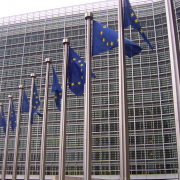Despite France’s campaign against glyphosate and a plan to ban it in a majority of agricultural practices by the end of 2020, the sale of the world’s most commonly used weedkiller in the country soared by 10% in 2018.
Furthermore, the overall sales of plant protection products went through the roof in 2018, putting in doubt the feasibility of France’s plan to halve the use of pesticides by 2025, even though Agriculture Minister Didier Guillaume recently sought to reassure the public on glyphosate.
“The commitments made by the President will be kept […] glyphosate will be banned for most uses by the end of 2020,” Guillaume told a National Assembly hearing on 9 January.
But the issue of cases where banning the use of glyphosate will remain impossible due to a lack of alternative solutions has not yet been resolved. The list of exceptions should be unveiled by June 2020.
Another concern regarding the 0% glyphosate project is the lack of alignment with other European countries, whose timetable for the phasing out glyphosate is not constrained since the substance’s authorisation at the EU level has been extended to 2022.
“If we say that glyphosate is to be banned by the end of the year, it will not be in other countries […] We have a problem of unfair competition within the member states,” the minister acknowledged.
France has been quite vocal against the EU re-authorisation of glyphosate. However, in practice, it’s been facing some difficulties.
In an interview with EURACTIV last year, the then EU Health Commissioner Vytenis Andriukaitis hinted that French President Emmanuel Macron “spoke too ‘loudly’ against glyphosate” before elections.
France’s so-called ‘Ecophyto’ plan, which aims to reduce the use of phytosanitary (or plant protection) products by 50% by 2025, has already been postponed several times since its creation in 2008.
And since figures on the sales of plant protection products saw a sharp increase in 2018, such an objective now seems unattainable.
Storage and substitution effect
Agriculture Minister Guillaume confirmed that “the objective of reducing the use of phytosanitary products by 50% is still the same,” but acknowledged: “Never before has so much been done, yet the purchase curve of phytosanitary products continues to rise.”
According to figures published on 7 January, sales volumes of phytosanitary products soared by 21% in 2018 compared to 2017. “It’s not a failure, […] but we’re not getting there,” the minister said.
Part of the reason is supply issues. Farmers are reported to have made “massive purchases” in anticipation of an increase in the non-point source pollution charge, which taxes substances of greatest concern as of 1 January 2019, according to an agriculture ministry news release.
“But the issue of stocks doesn’t explain everything,” the minister said, however. “We have to look at which types of substances are on the rise because those that are increasing the most are also the least toxic […]” he added.
In detail, part of this increase can be explained by the decline in sales of the most harmful products (CMR1 and CMR2), whose volumes have decreased by “ten to 15% since 2009”, Didier Guillaume detailed.
“A certain number of molecules have also been banned in Europe, and have been replaced by products which are being used in greater quantities,” he added. Specific volume effects may indeed be at the origin of part of the increase.
Obstruction in the agricultural world
The reason why the fight for the reduction of phytosanitary measures appears to be failing is also linked to the obstruction by part of the agricultural world.
Although the number of organic farms has reached 10% in France and practices are evolving, agricultural unions are still broadly opposed to the vague desire for a speedy phase-out of pesticides.
The country’s largest farmers’ union, FNSEA, called for a moratorium on the application of pesticide-free zones around populated areas on Friday (10 January), threatening protest actions, it said in a statement.
Given that “by imposing restrictive measures with a strong economic impact, the government is creating an increasing number of burdens that undermine the financial health of farms”, the union is calling for “economic compensation for the farmers’ loss of income”.

